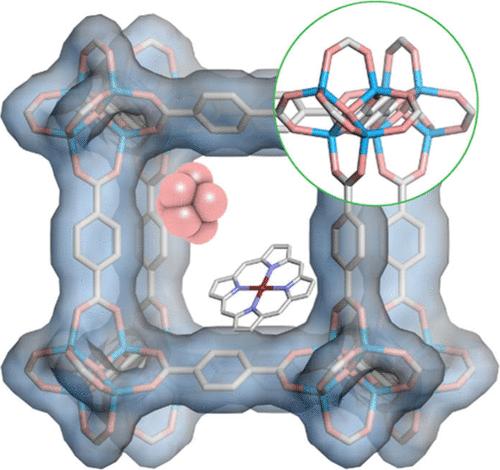Constructing High-Performance Heterogeneous Catalysts through Interface Engineering on Metal–Organic Framework Platforms
IF 14
Q1 CHEMISTRY, MULTIDISCIPLINARY
引用次数: 0
Abstract
Heterogeneous catalysis has pushed the modern chemical industry to an unprecedented level of development, especially in the past century, where catalytic processes have made significant contributions to the prosperity of the global economy and the modernization of human lifestyles. 80% of chemical processes involve catalytic technology. From the production of fertilizers and the synthesis of high-performance polymers to the development of anticancer drugs, catalysts mediate the occurrence of these chemical processes. Developing efficient, stable, and low-energy heterogeneous catalysts is the key to a sustainable future. Most industrial heterogeneous catalysts typically load highly dispersed active components at the nanoscale onto porous solid supports, which have a large specific surface area. Among the numerous candidates for porous materials, the construction of high-performance heterogeneous catalyst systems through interface engineering on metal–organic framework (MOF) platforms has recently received great attention. Compared with traditional porous materials, MOFs provide a huge active interface for catalytic reactions due to their large specific surface area and porosity. Their extraordinary skeleton structure provides many possibilities for integrating various functional building blocks. At the same time, as crystalline materials with diverse structures, their well-defined atomically precise structure provides an ideal platform for customized design and synthesis of catalysts as well as in-depth exploration of the structure–activity relationship between the structure of catalyst and the catalytic performance. After more than a decade of development, interface engineering has played a significant role in the development of MOF-based heterogeneous catalysts. Therefore, it is timely to summarize the latest developments in this field, which will provide guidance for future research and achieve green, low-carbon, and sustainable modern industries.

基于金属-有机骨架平台界面工程构建高性能多相催化剂
多相催化将现代化学工业推向了前所未有的发展水平,特别是在过去的一个世纪里,催化过程为全球经济的繁荣和人类生活方式的现代化做出了重大贡献。80%的化学过程涉及催化技术。从化肥的生产和高性能聚合物的合成到抗癌药物的开发,催化剂介导了这些化学过程的发生。开发高效、稳定、低能量的多相催化剂是可持续发展的关键。大多数工业非均相催化剂通常在纳米尺度上将高度分散的活性成分负载到具有较大比表面积的多孔固体载体上。在众多候选多孔材料中,通过金属-有机框架(MOF)平台上的界面工程构建高性能非均相催化剂体系近年来备受关注。与传统多孔材料相比,mof具有较大的比表面积和孔隙率,为催化反应提供了巨大的活性界面。它们非凡的骨架结构为集成各种功能构建块提供了许多可能性。同时,作为结构多样的晶体材料,其明确的原子精确结构为催化剂的定制设计和合成提供了理想的平台,也为深入探索催化剂结构与催化性能之间的构-活性关系提供了理想的平台。经过十多年的发展,界面工程在mof基非均相催化剂的开发中发挥了重要作用。因此,及时总结这一领域的最新发展,将为今后的研究提供指导,实现绿色、低碳、可持续的现代工业。
本文章由计算机程序翻译,如有差异,请以英文原文为准。
求助全文
约1分钟内获得全文
求助全文

 求助内容:
求助内容: 应助结果提醒方式:
应助结果提醒方式:


